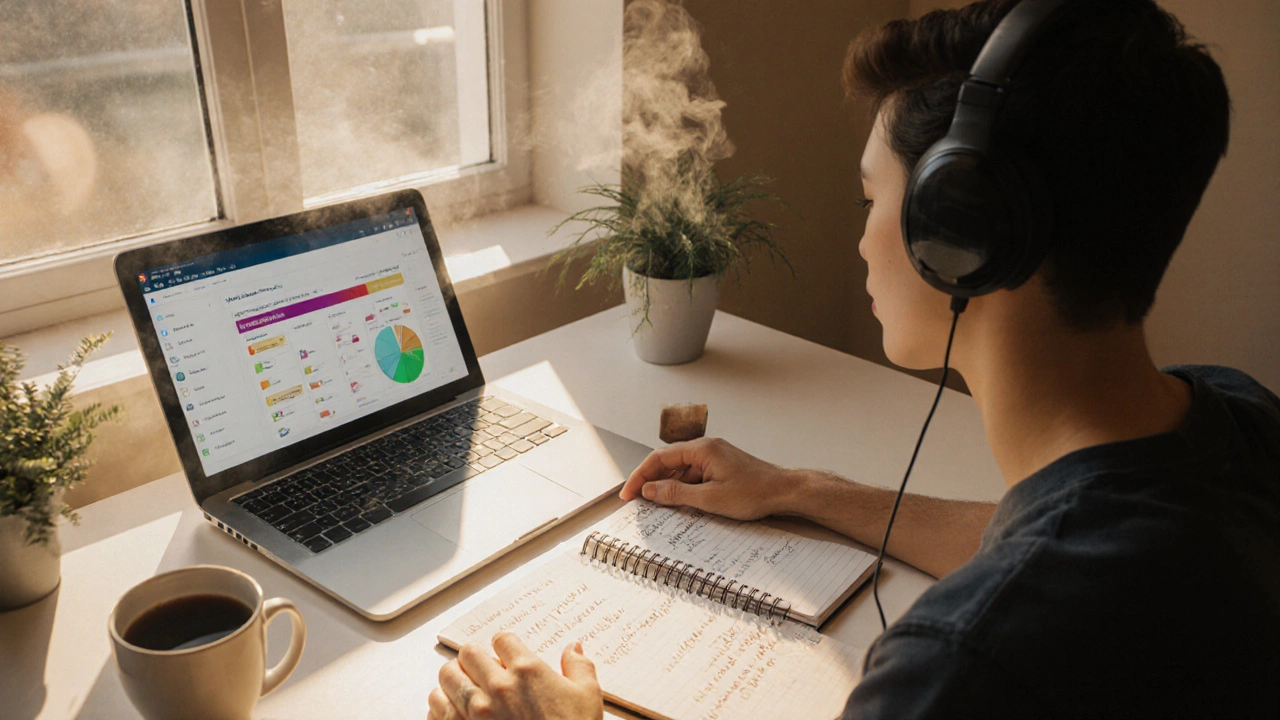
Can I Become Fluent in English on My Own? A Practical Guide
Learn how to become fluent in English on your own with a step‑by‑step plan, free resources, feedback tricks, and progress tracking tips.
Read MoreWhen you choose independent language learning, you become the driver of your progress. Independent Language Learning, a self‑directed approach where learners set goals, pick resources, and track results without formal classroom instruction. Also known as self‑study language acquisition, it lets you match speed and content to your life.
Adopting self‑study, you act as both teacher and student, selecting textbooks, videos, podcasts, and quizzes that fit your level builds discipline. This method requires a clear plan, regular review, and the willingness to adjust tactics. Pairing self‑study with language immersion, daily exposure to native content such as movies, music, and conversations speeds up comprehension because your brain learns patterns in context. Immersion also creates natural feedback loops—when you hear a phrase used correctly, you internalize it faster than rote memorization.
Technology amplifies both self‑study and immersion. Digital learning apps, platforms that offer interactive lessons, voice recognition, and spaced‑repetition flashcards make practice portable. Users can switch between reading, listening, and speaking drills in minutes, turning commute time into language time. These apps often include community features, so you can chat with peers and get real‑world correction, turning solo study into collaborative practice. The result is a blended routine where structured lessons meet spontaneous usage.
First, set measurable goals: decide whether you aim for basic conversation, academic proficiency, or professional fluency. Next, build a habit loop—short daily sessions (15‑30 minutes) beat occasional marathon study because they reinforce neural pathways consistently. Third, track progress with a simple log: note new vocabulary, grammar points, and confidence levels after each session. Fourth, diversify input: read news articles, watch YouTube tutorials, and listen to podcasts in the target language. Finally, test yourself regularly with speaking prompts, writing tasks, or language exchange partners. These steps create a feedback‑rich environment that mirrors classroom accountability without the paperwork.
Below you’ll discover a hand‑picked collection of guides that dive deeper into each of these ideas. From proven English fluency methods to the best learning apps of 2025, the posts will give you concrete tools to accelerate your independent language journey.

Learn how to become fluent in English on your own with a step‑by‑step plan, free resources, feedback tricks, and progress tracking tips.
Read More